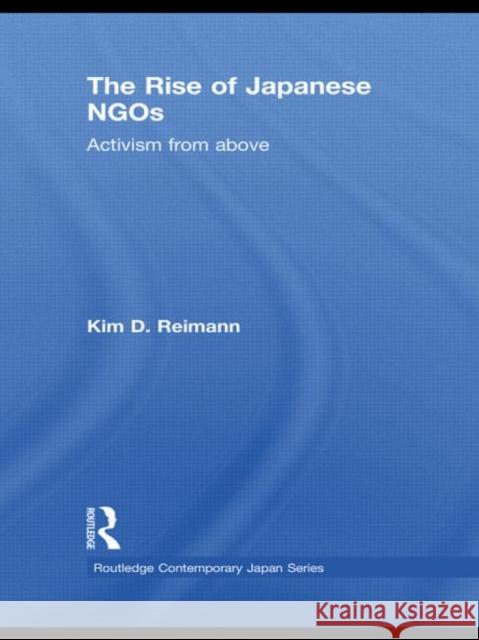The Rise of Japanese NGOs: Activism from Above » książka
The Rise of Japanese NGOs: Activism from Above
ISBN-13: 9780415498029 / Angielski / Twarda / 2009 / 208 str.
The Rise of Japanese NGOs: Activism from Above
ISBN-13: 9780415498029 / Angielski / Twarda / 2009 / 208 str.
(netto: 696,83 VAT: 5%)
Najniższa cena z 30 dni: 705,23
ok. 22 dni roboczych.
Darmowa dostawa!
Over the past two decades, non-governmental organizations (NGOs) have exploded in number and emerged as a new force in international and transnational politics. Why, however, do some countries nonetheless have more active NGO sectors than others? Using the case of Japan, this book uncovers patterns of convergence and divergence in levels of activism across industrialized countries and offers a two-level political explanation for the rise of NGOs as a global phenomenon. The author argues that activism has been cultivated from "above" and shows the ways in which political structures and processes at the domestic and international level have either encouraged or discouraged activism. Japan, a late developer in terms of its number of NGOs, provided a poor political environment for NGO activism for most of the post-war period. In the past two decades, however, as this situation has changed, NGOs have become a visible player as both critics and partners of the government.. Using the concepts of international political opportunity, norm socialization and transnational diffusion, Reimann traces the ways in which domestic and international politics interact and promote the rise of NGOs globally. This book will be of interest to postgraduate students and academics working in political science, international relations, sociology, policy studies, Asian studies, international development and environmental politics.
Over the past two decades, non-governmental organizations (NGOs) have exploded in number and emerged as a new force in international and transnational politics.
Focusing on NGOs active in global issues in the advanced industrialized countries, it uses the case of Japan to offer a more comprehensive account for understanding the growth of NGOs in recent years. Some countries are leaders of NGO activism while others, such as Japan, are more aptly described as laggards in NGO activism and have comparatively far fewer and less influential NGOs. Yet despite these differences, both leader and laggard countries alike have experienced an exponential growth in the number of NGOs in the past two decades.
By comparing Japan with some of the leaders in NGO activism, it becomes clear why some countries have been less fertile terrain for NGOs while other countries have been incubators. At the same time, Japan has also witnessed an explosion of NGO since the late 1980s and provides a fascinating case for examining the causes of the recent NGO boom. Looking at domestic politics, transnational diffusion, the state’s relationship with civil society and societal actors, the book demonstrates how and why NGOs active in global issues have become more visible in Japan and are now established players in the policy making process.
This book will be of interest to postgraduate students and academics working in political science, international relations, sociology, policy studies, Asian studies, international development and environmental politics.











